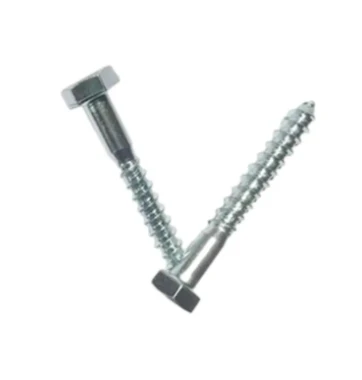dec . 26, 2024 04:34 Back to list
foundation bolt standard sizes
Understanding Foundation Bolt Standard Sizes
Foundation bolts are critical components used in the construction and engineering industries, particularly for anchoring structures to their foundations. These bolts provide stability and strength, making them indispensable in various applications such as buildings, bridges, and other large structures. The importance of foundation bolts extends beyond mere functionality; selecting the correct sizes and types is crucial to ensuring the structural integrity and longevity of a project.
The Basics of Foundation Bolts
Foundation bolts come in various shapes, sizes, and materials. Typically, these bolts are embedded in concrete and are used to secure structural steel elements to the foundation. The design of these bolts is subject to various industry standards that dictate dimensions, material properties, and performance criteria. Common shapes of foundation bolts include L-bolts, J-bolts, and straight bolts, each serving different purposes based on the structural requirements.
Standard Sizes of Foundation Bolts
The standard sizes for foundation bolts can vary based on several factors, including the industry standards being used, the structural requirements, and local building codes. Generally, foundation bolts are categorized by their diameter and length. Common diameters for foundation bolts range from 1/2 inch (12.7 mm) to 1 inch (25.4 mm), although larger sizes are available depending on specific project needs.
1. Diameter The diameter of a foundation bolt is critical because it directly impacts the bolt's load-bearing capacity. A larger diameter usually equates to a higher load capacity. Standard diameters typically used in construction are 1/2 inch, 5/8 inch, 3/4 inch, and 1 inch. For heavy structures or high-stress applications, bolts with diameters of 1.25 inches (31.75 mm) and larger might be necessary.
2. Length The length of the foundation bolt also varies based on the thickness of the material they are anchoring and the overall design of the structure. Standard lengths often range from 6 inches (152.4 mm) to 36 inches (914.4 mm), but custom lengths can be manufactured as needed. The length must account for the depth of the concrete pour, ensuring that the bolt is adequately anchored for maximum strength.
foundation bolt standard sizes

3. Threading Foundation bolts are usually threaded to enable them to be fastened easily. The typical threading standards include Unified National Coarse (UNC) and Unified National Fine (UNF) threads, which are defined by their number of threads per inch. Ensure that the threading matches the nuts and washers being used to create a secure connection.
Material Considerations
Foundation bolts are manufactured from various materials depending on the environmental conditions and structural requirements. Common materials include carbon steel, stainless steel, and even high-strength alloys for specialized applications. The choice of material affects not only the strength and durability of the bolt but also its resistance to environmental factors such as corrosion.
Standards and Codes
Foundation bolt standards are established by various organizations, including the American National Standards Institute (ANSI), the American Society for Testing and Materials (ASTM), and the International Organization for Standardization (ISO). Compliance with these standards ensures that the foundation bolts will perform as expected under load and are safe for use in construction projects. Contractors and engineers should always consult these standards when selecting foundation bolts to ensure adherence to safety regulations and industry best practices.
Conclusion
Choosing the right foundation bolt size and type is essential for any construction project. Understanding the standard sizes, materials, and applicable standards helps engineers and contractors make informed decisions that will ensure the stability and safety of their projects. As advancements in construction materials and techniques continue to evolve, staying updated on the latest standards and testing methods will enhance the reliability of foundation bolts, ultimately leading to safer and more durable structures.


